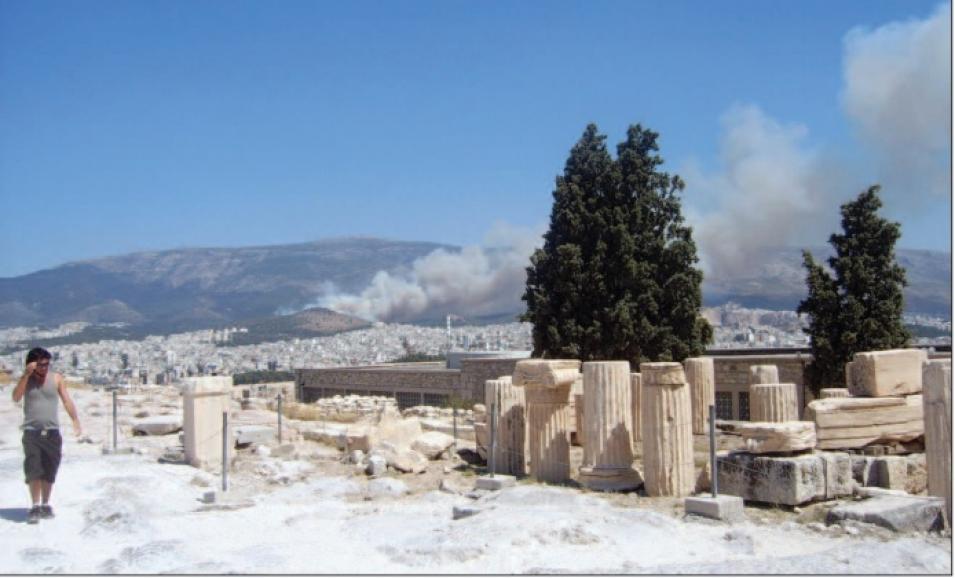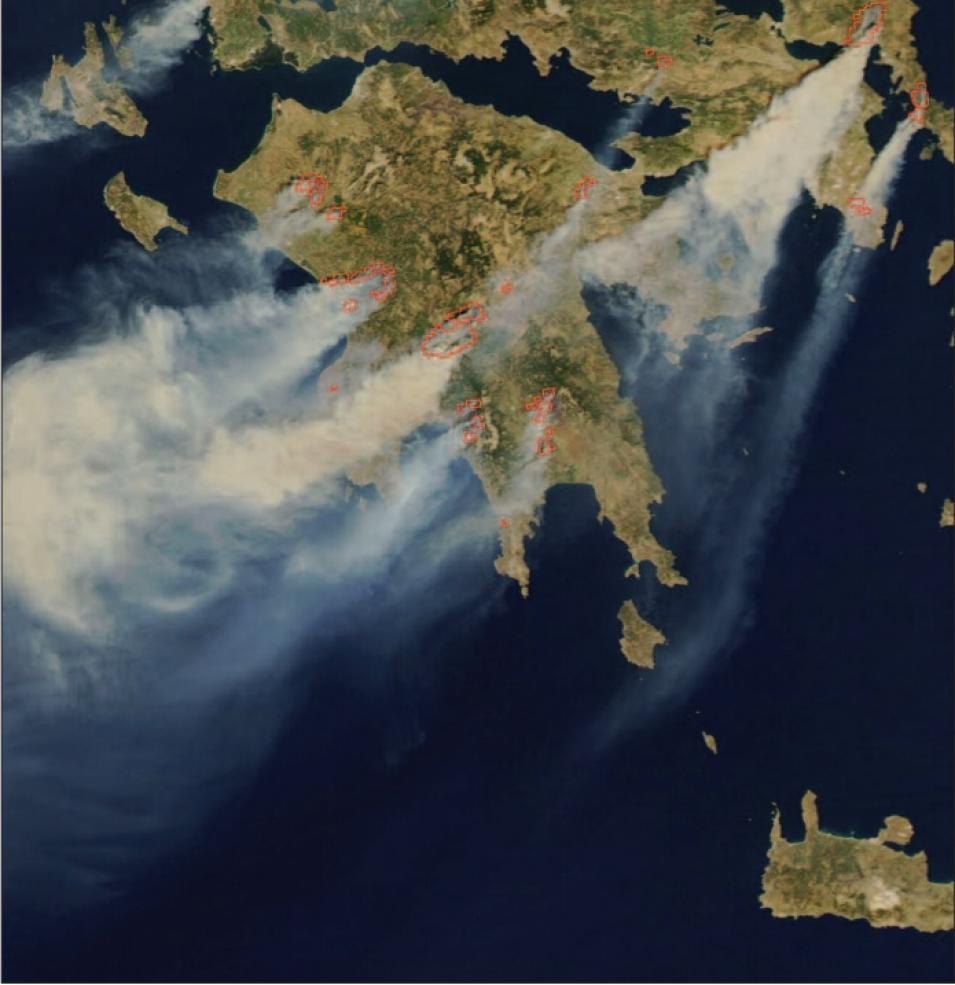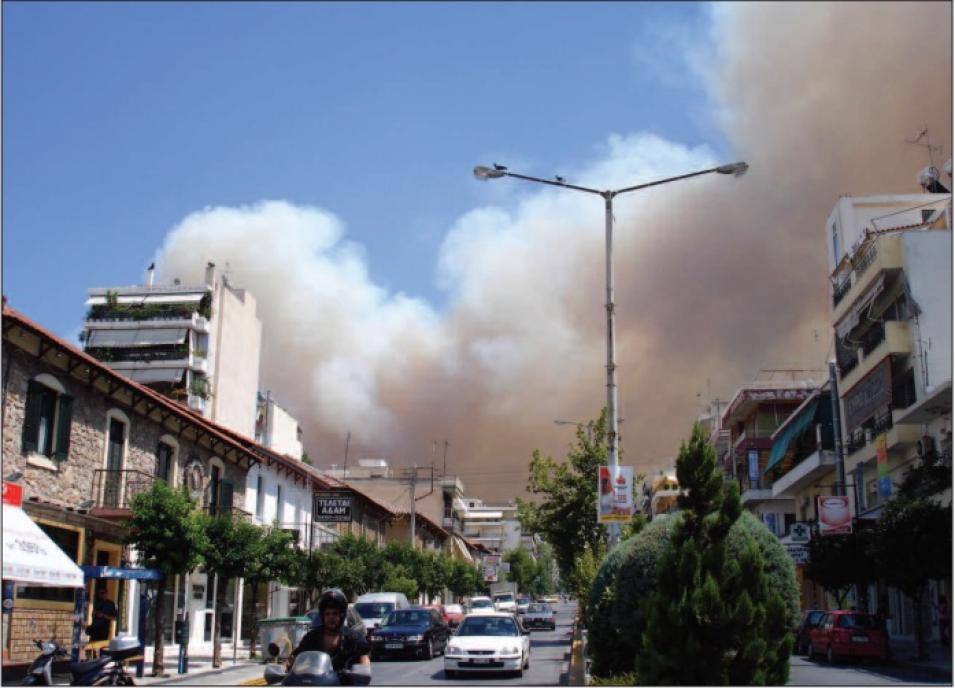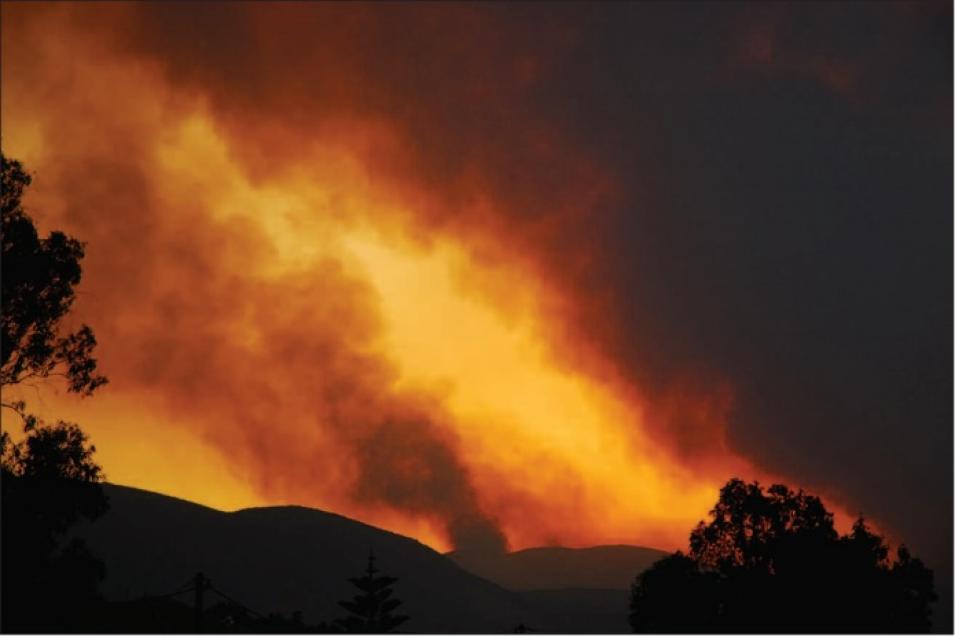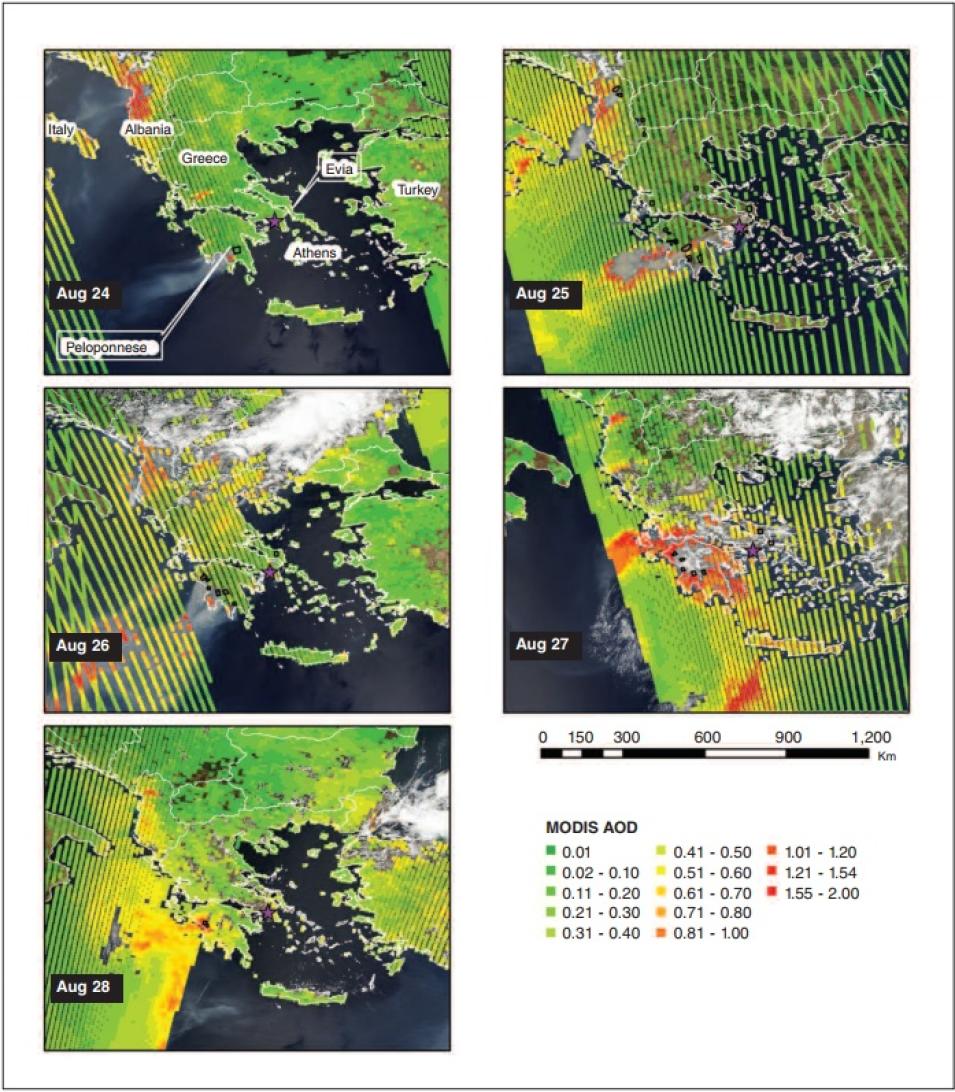Liu and Kahn even discovered new possibilities for one sensor. Liu said, “It’s interesting to note that MODIS behaved very well during the two episodes. It tracks ground level pollution very well.” MODIS works best when the pollution is sulfate-dominated, the kind that comes from industrial sites. But during the two pollution peaks, pollution was dominated by motor vehicle emissions. “In our two episodes, pollution was composed of nitrate, black carbon, and organic carbon. But the MODIS instrument still worked very well,” Liu said.
Remote sensing is proving to be an important tool in monitoring air quality in major urban areas worldwide. Liu said, “We are entering the age of air quality monitoring from space. Carefully interpreted satellite data can give us valuable information about air pollution conditions and forest fire episodes. Although still at its infancy, satellite-based air quality monitoring has started to provide early warnings of pollution events to major urban areas all over the world.”
References
Liu, Y., R. Kahn, A. Chaloulakou, and P. Koutrakis. 2009. Analysis of the impact of the forest fires in August 2007 on air quality of Athens using multi-sensor aerosol remote sensing data, meteorology, and surface observations. Atmospheric Environment, doi:10.1016/j.atmosenv.2009.04.010
Yang Liu, interview by Lindsay Patterson, Earth sky: A clear voice for science. November 25, 2008.
For more information
NASA Atmospheric Science Data Center (ASDC)
Moderate Resolution Imaging Spectroradiometer (MODIS)
MODIS Rapid Response System
Multi-angle Imaging SpectroRadiometer (MISR)
Ozone Mapping Instrument (OMI)
| About the remote sensing data |
|---|
| Satellites | Terra and Aqua | Terra | Aqua |
| Sensors | Moderate Resolution Imaging Spectroradiometer (MODIS) | Multi-angle Imaging SpectroRadiometer (MISR) | Ozone Mapping Instrument (OMI) |
| Data sets | MODIS Level 2 Aerosol | MISR Level 2 Products | Near-UV Aerosol Optical Depth and Single Scattering Albedo |
| Resolution | 10 kilometer, derived from Level 1 radiance data at 0.5 and 1.0 kilometer | 1.1 kilometer | 13 x 24 kilometer nominal resolution at nadir |
| Parameters | Aerosol optical depth | Stereo height | Aerosol index and associated aerosol types |
| DAACs | NASA Level-1 and Atmosphere Archive and Distribution System Distributed Active Archive Center (LAADS DAAC) | NASA Atmospheric Science Data Center (ASDC) | NASA Goddard Earth Sciences Data and Information Services Center (GES DISC) |
